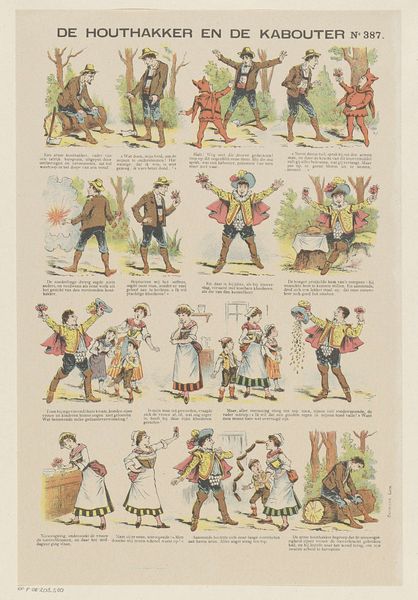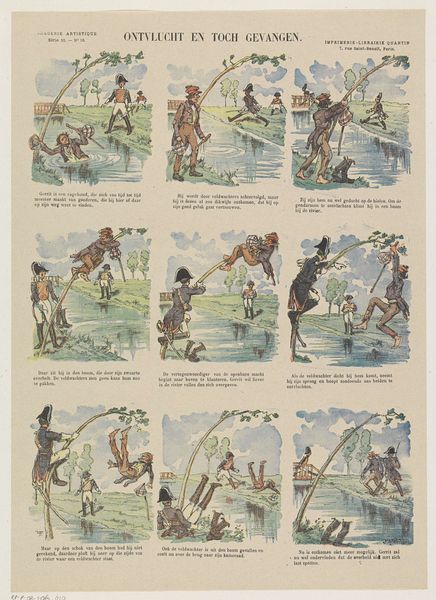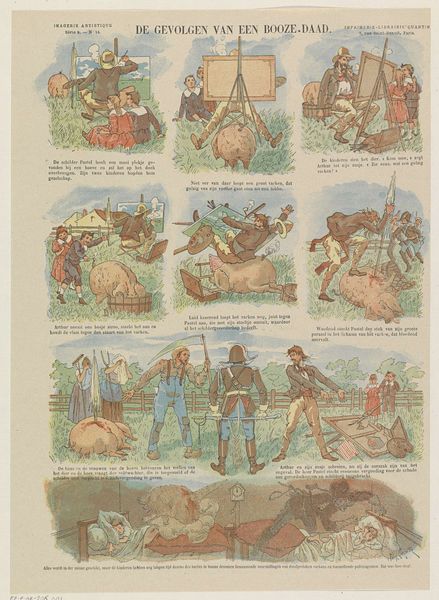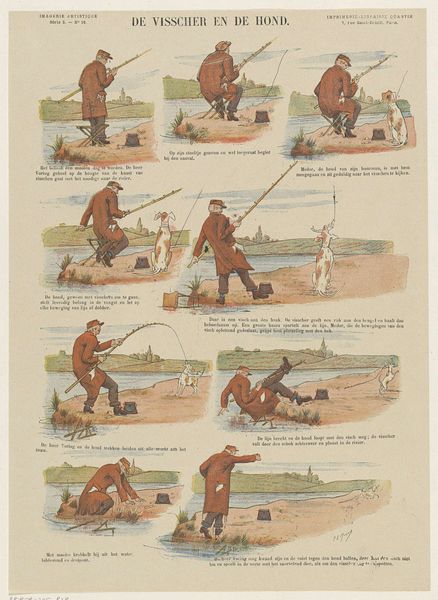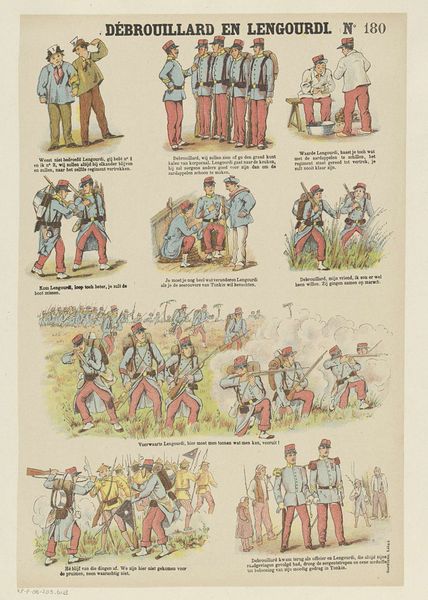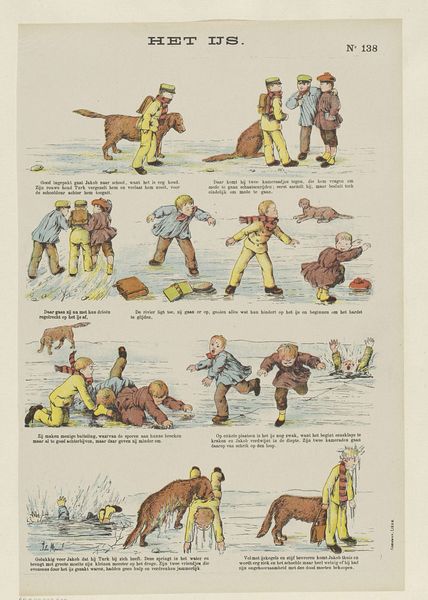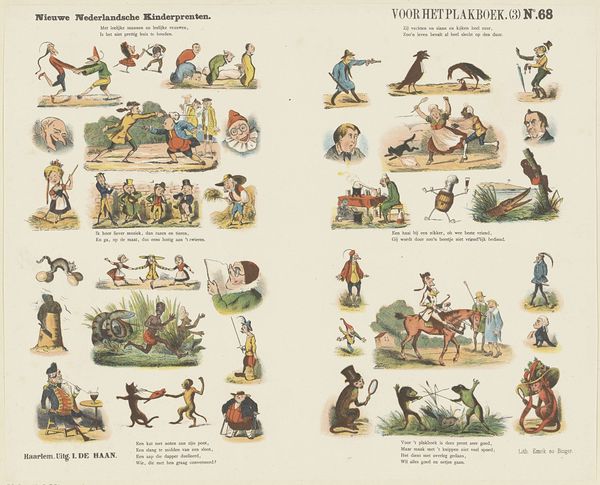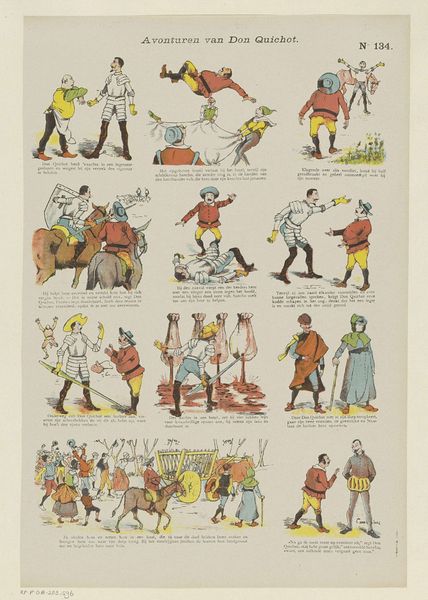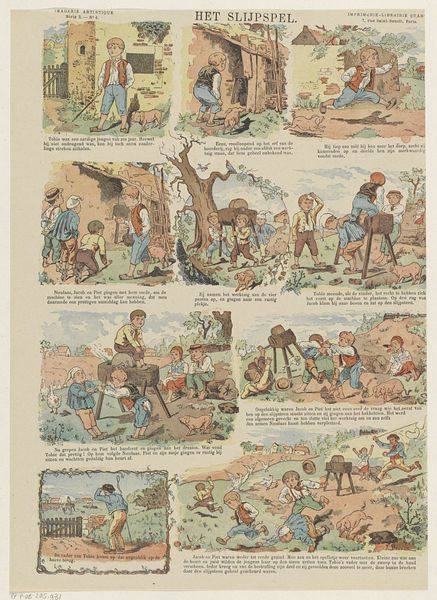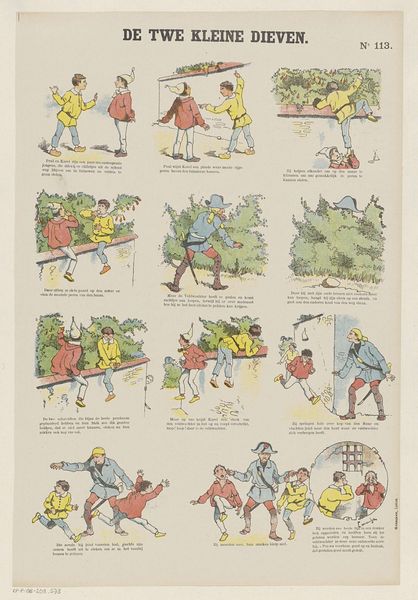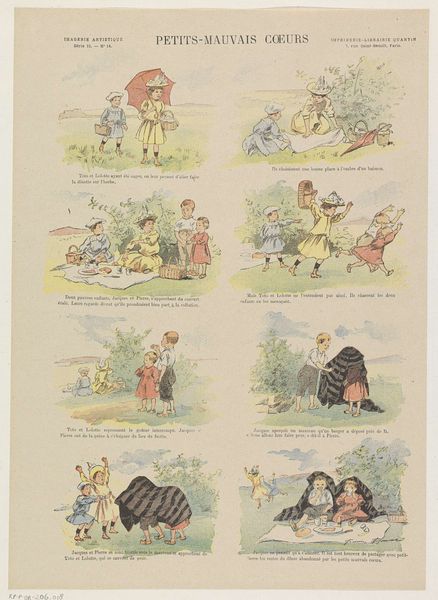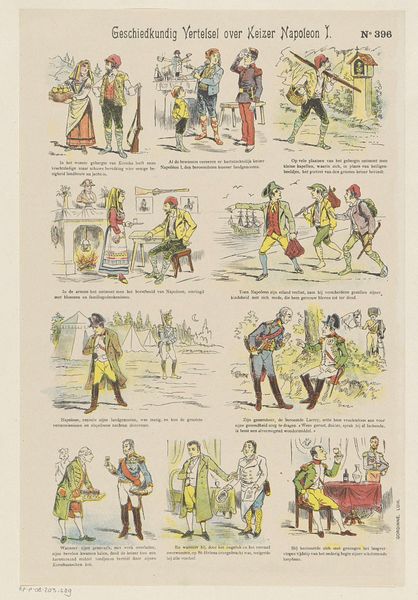
lithograph, print
#
landscape illustration sketch
#
narrative-art
#
lithograph
# print
#
impressionism
#
watercolour illustration
#
genre-painting
Dimensions: height 368 mm, width 264 mm
Copyright: Rijks Museum: Open Domain
Curator: Firmin Bouisset’s lithograph, titled “Aan het strand”, or “On the Beach,” made sometime between 1876 and 1891, immediately presents a charming, almost naive, visual narrative. What's your first take? Editor: Well, it certainly exudes a sense of innocent play. The palette is subdued, almost faded, lending an antique charm to the sequential scenes of children at the beach, giving an overall mood that is pleasant but somewhat static in tone. Curator: Absolutely. Considering the historical context, this lithograph provides insights into leisure activities and childhood in late 19th-century Europe. The emergent middle class began to regard childhood differently. Editor: True. However, I'm particularly interested in the composition. It seems structured like a comic strip or a children's book illustration. The narrative unfolds through these separate panels showing the children interacting with each other, with toys, and most notably, with a crab! Curator: Indeed! Notice how Bouisset uses line and color minimally, yet effectively, to delineate forms and spaces. The subtle color variations lend depth while maintaining the flatness inherent in the printing process. Semiotically, each panel represents a discrete unit of meaning that, when combined, produces a simple but relatable tale. Editor: From a social history perspective, the inclusion of a fisherman interacting with the children tells of both opportunity and commerce within these new leisure spaces. How this moment is illustrated and represented is also of importance, presenting children, crab, and working class figures as interacting across the emerging social divides. Curator: Precisely! While seemingly lighthearted, it reflects evolving attitudes toward leisure and social dynamics. Editor: I am left considering how artists reflect, but also create the spaces and interactions as understood in collective memories and lived social relations. Curator: This lithograph indeed acts as a window into a bygone era, skillfully presenting not just its aesthetic values but a set of historically determined realities.
Comments
No comments
Be the first to comment and join the conversation on the ultimate creative platform.
